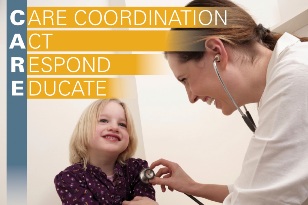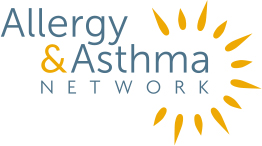As school nurses welcome students back to school, NASN provides a Back-to-School Toolkit that gives tools and resources to organize and strategize this new school year. As part of the Toolkit, NASN welcomed me as a guest blogger to share an organizing tip for back to school.
School nurses are busy – especially at the beginning of the school year. Health issues and administrative duties grab your attention, competing over what needs to get done first.
In the midst of reviewing immunization records, talking to teachers, interfacing with parents and going through stacks of paperwork, remember to CARE for your students with allergies.

CARE COORDINATION: You are often the one coordinating care and “holding all of the pieces” between home, school and the medical home.
How do you do this?
- Identify students with life-threatening allergies and get a written statement of diagnosis from the student’s healthcare provider. There can be some confusion with parents as to whether the student has a true allergy or intolerance, and having a diagnostic statement avoids confusion and helps to direct care. Also, many food service departments require a diagnosis before food substitutions can be made.
- Every student at risk for anaphylaxis should have an Emergency Care Plan, or ECP – ideally written before the first time they walk through the doors of the school. If not done yet, work to get this in place as soon as possible. If appropriate, an Individualized Healthcare Plan, or IHP, can be developed as well.
- Provide referrals to parents as needed. You are in the perfect position to assess the student’s abilities to both self-medicate and self-manage their allergy and any reaction that may occur.
ACT: Take action to keep the school environment safe for students with food allergies.
- Continually assess the school environment to be sure that all areas are as “allergen safe” as possible. Thinking about food, it’s obvious that the cafeteria needs your attention, but other materials in the classroom may be an issue for a student with a food allergy as well.
- It’s vital for you to assist staff in identifying potential allergens for each area of the school and to discuss specific prevention strategies.
- It’s also important for you to work with counseling staff, teachers, administrators and others to provide emotional support to students with food allergies. Bullying is often an issue. School staff can work together to teach students how to manage situations in which they may find themselves bullied.
RESPOND: With strong prevention strategies in place, we would like to think that we will never have an emergency, but we need to be ready in the event that anaphylaxis occurs.
- You are the ideal leader for developing a school-wide emergency response plan with specific roles assigned to staff members. It’s valuable to have a “table top drill” with staff that will likely respond if an emergent event occurs.
- Staff members need to be willing and able to administer an Emergency Care Plan – work with them to talk through how a person would react in an emergency. They need to know where a student’s epinephrine auto-injector is – or where stock epinephrine is stored in states that allow it – and how to administer it. Store the emergency medication where it is accessible and have a plan in place to monitor the expiration dates.
- Following an emergency, you can lead a debriefing meeting with all involved in the incident. This allows non-medical staff to express concerns and helps evaluate the incident and improve outcomes in the future.

EDUCATE: One of the most important things that you can do is to keep up-to-date on what is considered to be “best practice” in the food allergy management arena. It’s important to remember, though, to utilize evidence-based information in our school nursing practices.
- Staff will benefit from receiving education on the signs and symptoms of an allergic reaction. Each student’s reaction may look a little different and an individual’s reaction might be different from previous ones.
- All school staff members who work with students need to know prevention strategies to avoid exposures, including knowing and avoiding allergens, reading food labels and avoiding cross contact or contamination.
- Another key point to cover in educating staff is following an Emergency Care Plan in the event a student with a known allergy has a reaction or a student without a known allergy experiences a life-threatening allergic reaction. Staff needs to understand that this is a real emergency and know what to do.
- Education continues with students, parents and guardians.
- Students need to understand how to self-manage their allergy – from understanding the pathophysiology in a developmentally appropriate manner to learning how to avoid their allergen. As they understand their own symptoms of an allergic reaction, it’s important to teach them how to self-medicate as well. Students also benefit from guidance as to when to tell an adult that they require help – and with younger children, they may even need help with knowing how to tell an adult they need assistance.
- Parents and guardians of food-allergic children live with food allergy issues 24 hours a day, 7 days a week. They need to find a real partner in their school nurse. Look for ways to work together for the benefit of students.
Allergy & Asthma Network has resources available for schools and school nurses at AllergyAsthmaNetwork.org.
